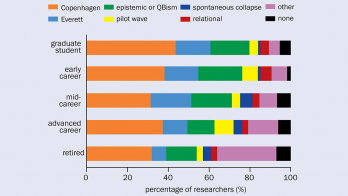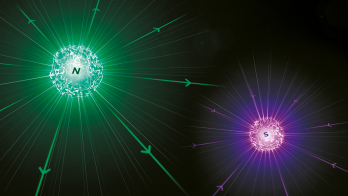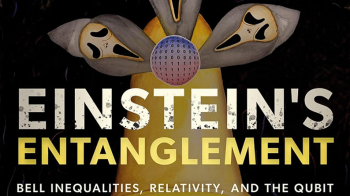
Since its inception in the mid-1980s, the Strings conference has sought to summarise the latest developments in the interconnected fields of quantum gravity and quantum field theory, all under the overarching framework of string theory. As one of the most anticipated gatherings in theoretical physics, the conference serves as a platform for exchanging knowledge, fostering new collaborations and pushing the boundaries of our understanding of the fundamental aspects of the physical laws of nature. The most recent edition, Strings 2024, attracted about 400 in-person participants to CERN in June, with several hundred more scientists following on-line.
One way to view string theory is as a model of fundamental interactions that provides a unification of particle physics with gravity. While generic features of the Standard Model and gravity arise naturally in string theory, it has lacked concrete experimental predictions so far. In recent years, the strategy has shifted from concrete model building to more systematically understanding the universal features that models of particle physics must satisfy when coupled to quantum gravity.
Into the swamp
Remarkably, there are very subtle consistency conditions that are invisible in ordinary particle physics, as they involve indirect arguments such as whether black holes can evaporate in a consistent manner. This has led to the notion of the “Swampland”, which encompasses the set of otherwise well-behaved quantum field theories that fail these subtle quantum-gravity consistency conditions. This may lead to concrete implications for particle physics and cosmology.
An important question addressed during the conference was whether these low-energy consistency conditions always point back to string theory as the only consistent “UV completion” (fundamental realisation at distance scales shorter than can be probed at low energies) of quantum gravity, as suggested by numerous investigations. Whether there is any other possible UV completion involving a version of quantum gravity unrelated to string theory remains an important open question, so it is no surprise that significant research efforts are focused in this direction.
Attempts at explicit model construction were also discussed, together with a joint discussion on cosmology, particle physics and their connections to string theory. Among other topics, recent progress on realising accelerating cosmologies in string theory was reported, as well as a stringy model for dark energy.
A different viewpoint, shared by many researchers, is to employ string theory rather as a framework or tool to study quantum gravity, without any special emphasis on its unification with particle physics. It has long been known that there is a fundamental tension when trying to combine gravity with quantum mechanics, which many regard as one of the most important, open conceptual problems in theoretical physics. This becomes most evident when one zooms in on quantum black holes. It was in this context that the holographic nature of quantum gravity was discovered – the idea that all the information contained within a volume of space can be described by data on its boundary, suggesting that the universe’s fundamental degrees of freedom can be thought of as living on a holographic screen. This may not only hold the key for understanding the decay of black holes via Hawking radiation, but can also teach us important lessons about quantum cosmology.
Strings serves as a platform for pushing the boundaries of our understanding of the fundamental aspects of the physical laws of nature
Thousands of papers have been written on this subject within the last decades, and indeed holographic quantum gravity continues to be one of string theory’s most active subfields. Recent breakthroughs include the exact or approximate solution of quantum gravity in low-dimensional toy models in anti-de Sitter space, the extension to de-Sitter space, an improved understanding of the nature of microstates of black holes, the precise way they decay, discovering connections between emergent geometry and quantum information theory, and developing powerful tools for investigating these phenomena, such as bootstrap methods.
Other developments that were reviewed include the use of novel kinds of generalised symmetries and string field theory. Strings 2024 also gave a voice to more tangentially related areas such as scattering amplitudes, non-perturbative quantum field theory, particle phenomenology and cosmology. Many of these topics are interconnected to the core areas mentioned in this article and with each other, both technically and/or conceptually. It is this intricate web of highly non-trivial consistent interconnections between subfields that generates meaning beyond the sum of its parts, and forms the unifying umbrella called string theory.
The conference concluded with a novel “future vision” session, which considered 100 crowd-sourced open questions in string theory that might plausibly be answered in the next 10 years. These 100 questions provide a glimpse of where string theory may head in the near future.







